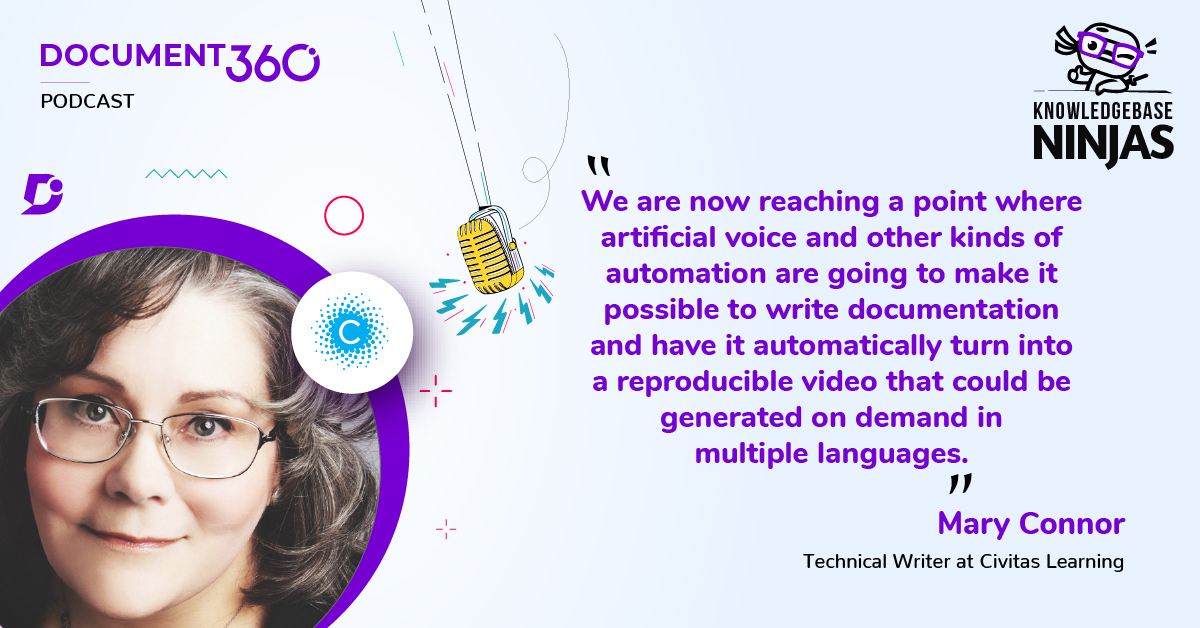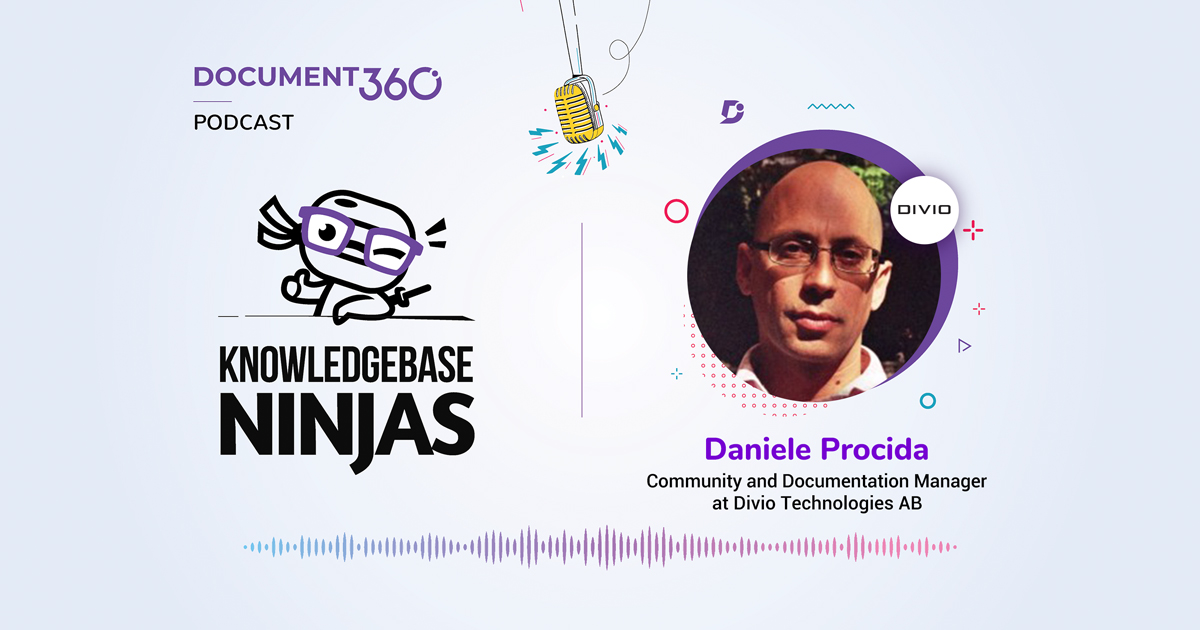Mary Connor, Technical Writer at Civitas Learning, joins us in this episode of Knowledgebase Ninjas Podcast and talks about documentation best practices that attract and serve customers and innovations in the technical writing space that excites her.
Key Facts
- Mary’s LinkedIn
- Civitas Learning’s Website
- Just after her master’s program in Technical Writing, she joined an R&D lab as a technical writer and later moved into the software domain.
- Mary has been designing technical product documentation for more than a decade now along with focusing on Agile documentation since 2008
- Currently, she is a lone writer for the user, admin, and developer documentation at Civitas Learning.
Key Takeaway
- As a documentation writer, she says her primary job is teaching people on paper. The orientation is very much about being a teacher, say, analyzing the audience, understanding what they need, figuring out how to reach them, how to come up with metaphors to build the conceptual bridges, where they need to go, etc.
- Speaking about crafting good documentation for end-users, she has the opinion that most people out there don’t like to read the documentation. Therefore, her primary objective while creating documentation would be to make it as much visual as possible. By visual, it doesn’t really mean pictures- It simply means there’s a structure with proper headings, forms, tables, diagrams, etc, and a brief look at it, users get a whole bunch of information and walk away without sitting down and reading everything.
- Mary believes that content density is a crucial aspect in attracting customers, Content density is the number of relevant content versus the obvious piece. For example, don’t tell people to click the print button to print. Give them the information they need. When their needs are met, then they’re going to come back and bring in more people to the content.
- Working in startup companies, in smaller environments, where things are more dynamic, she understood the importance of collaboration. Hence, while picking up a tool or defining a process, she chooses the one that her team is comfortable using.
- If they’re already established in the tool base, the strategy will be to figure out a way to expand where they already are, what they’re already comfortable doing, and how they already do reviews of their own content and their content problems.
- Mary says “In my experience, the biggest challenge when using these powerful rarefied tools is organization silos in terms of the tools they are using. Tech writers, product designers, etc using a different set of tools where nobody else can participate will result in huge payoffs if they are to change the tools.”
- “In the agile documentation process, I want to bring everyone on board, I want to give everyone the tools and I want them to meet at a single source”, she adds.
- Discussing the documentation process at Civitas Learning, she mentions the priority is to get the new releases and coverages for it, and at the same time trying to do these heavy lifts of migrating the old stuff and pulling things together. There might be a situation where you could look up a piece of content and there might be four different versions of it out there and nobody knows which one to use or is the current one. So, along with keeping up with the releases, there is a need to resolve such issues.
- The process is going to look like what Mary has built in other places where it’s going to be about the unknowable cadence of prioritizing. This is how we’re going to take care of releases, moving forward.
- Speaking about innovations in the technical writing space, the big change is the rise of what we call UX writing and the idea that the writer should be absolutely in there helping to design the user interfaces and to manage what she mentions as, the language of everything. This ties into internationalization and localization.
Mary’s biggest influence : Tom Johnson
He has all the information under his belt and started writing all the blogs that I wish I had written, he answers everyone’s questions, solves everything, and the fact that he put out an Application Programming Interface (API) training when no one else did was huge. That is what we all needed. Hats off to him, he’s a wonderful role model.
Key Resources
- Config, Figma’s annual conference. Figma- a tool for designing user interfaces, they have a huge number of talks that had to do with content design and with UX writing.
- Write The Docs (WTD) slack community
What documentation-related advice would Mary give to his 20-year-old self?
Never ever fret about not having the specific domain or engineering background because it turns out to be my superpower. Also, it means that I have very high user empathy and awareness and it makes me able to write much better docs. Do not feel insecure about that and just go for it.

Also Read: Ultimate Guide To Create an API Documentation with Examples
Subscribe to Knowledgebase Ninjas:


 –
– 

